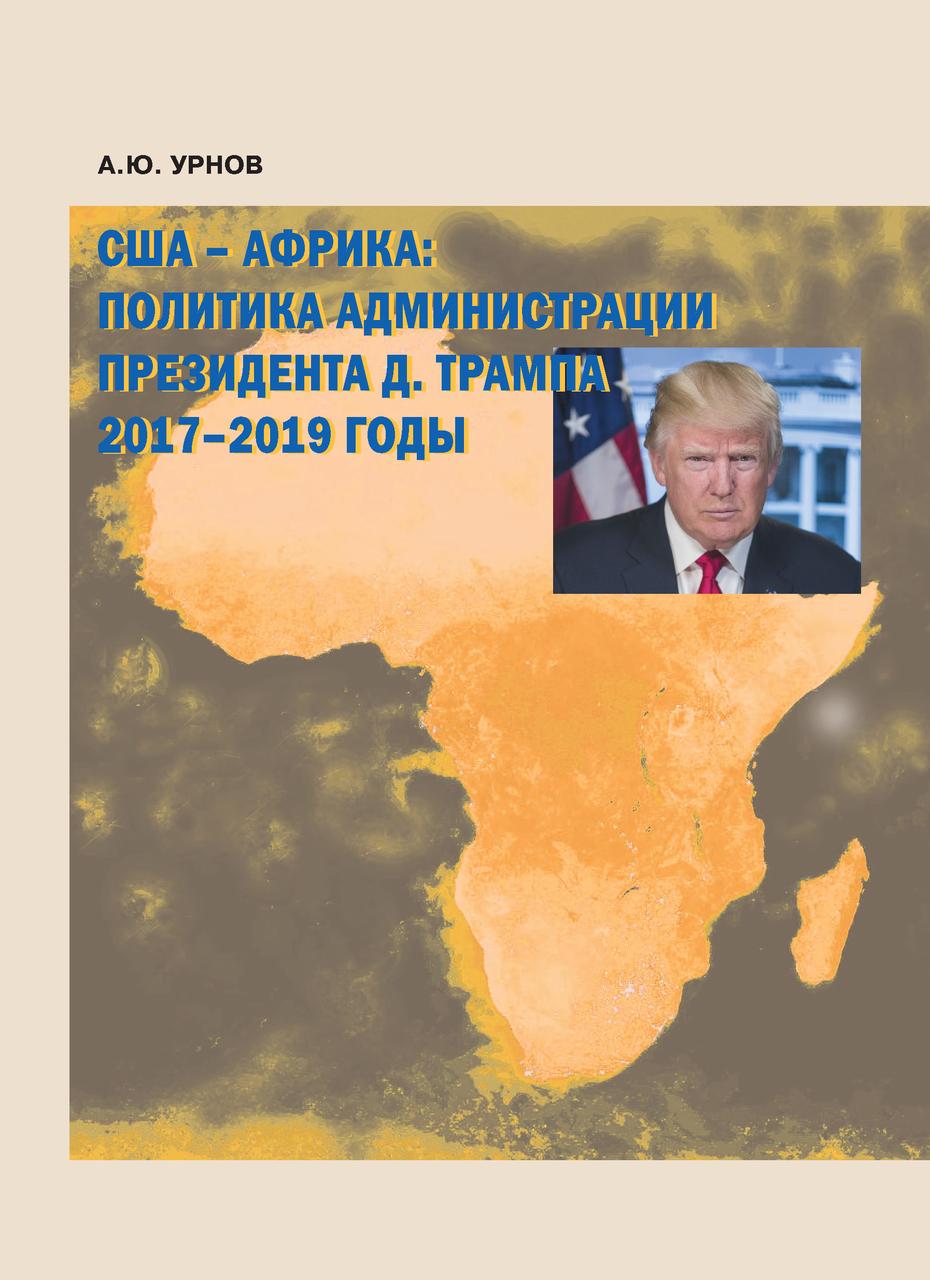Urnov A.Yu. USA - Africa: Policy of the Administration of President D. Trump. 2017-2019 years
 Urnov A.Yu. USA - Africa: Policy of the Administration of President D. Trump. 2017-2019 years .
Urnov A.Yu. USA - Africa: Policy of the Administration of President D. Trump. 2017-2019 years .
Resp. editor Ph.D., senior researcher O.S. Kulkova
- M .: IAfr RAN, 2020 .-- 294 p.
ISBN 978-5-91298-247-7
This work is a continuation of two monographs by the author on the African policy of President Barack Obama in 2009–2016, which were published by the Institute for African Studies of the Russian Academy of Sciences in 2015 and 2017.
From the point of view of goal-setting and activity, D. Trump's policy in the African direction was at first markedly different from the policy of B. Obama. The new administration did not include Africa among its priorities. However, the forecasts of the impending "marginalization" of the Black continent under D. Trump did not come true. Following the constant course of the United States towards world hegemony, the 45th US President could not afford to ignore the growing geostrategic, political and economic importance of Africa in the modern world.
During the period under review, US interest in Africa was growing. Washington acted more and more energetically. Many of the attitudes, programs and mechanisms used by the D. Trump administration were borrowed from their predecessors. The desire to improve the effectiveness of this policy was evidenced by the launch in December 2018 of the "New African Strategy" aimed at strengthening the position and ensuring the dominant influence of the United States on the continent. Along with China, Russia was declared the main US competitor in Africa.
The work consists of two parts. The first analyzes the conceptual attitudes and the course of implementation of the African course of D. Trump in the field of politics, economics, military affairs and in other areas. The second part examines the development of relations with 15 African states, including Nigeria, Egypt, South Africa, Libya, South Sudan, Sudan and the Democratic Republic of the Congo, on the example of which the author tried to show various models of bilateral ties built by Washington on the continent.







